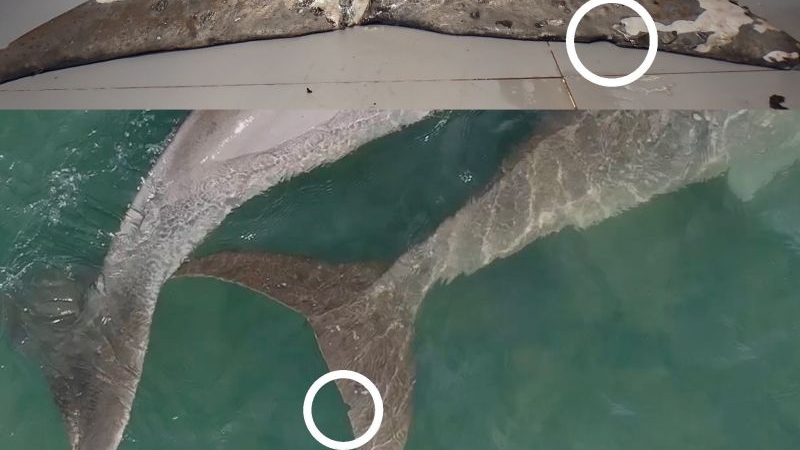The female dugong, measuring 251cm in length and weighing approximately 130kg, was found yesterday (Apr 8), according to the Andaman Sea Marine and Coastal Resources Research Center, a division of the Department of Marine and Coastal Resources (DMCR).
An initial autopsy revealed the adult dugong was severely decomposed and underweight, with a body condition score of 2 out of 5. Barnacles were found attached to the body, along with marks believed to be caused by interactions with other dugongs. Five deep wounds reaching the fat layer were also noted on the side of the body.
Marine researchers identified blemishes on the dugong’s skin that matched a previously observed dugong in Ao Tangkhen, which had appeared unusually thin since January. This raised suspicions that the animal had been suffering from a prolonged illness.
Internally, the dugong’s muscles were found to be atrophied and decayed. Its digestive tract was packed with seagrass, and roundworms were discovered along with a piece of plastic and two tendons in the intestines, although these were not believed to be the cause of death. An abnormal thickening of the uterine wall was also noted.
Due to the extensive decomposition of most internal organs, no definitive signs of disease could be confirmed. Officials believe natural illness was the likely cause of death, but laboratory testing of collected tissue samples is ongoing for further analysis.
Dugongs are listed as vulnerable marine animals in Thailand and are protected under national conservation laws.








